

HAMC: Proximate Composition Analysis
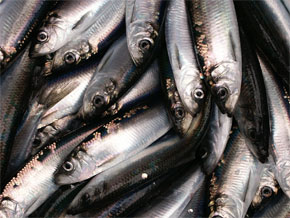 |
Pacific herring (Clupea pallasi). |
Proximate analysis is used to estimate the relative amounts of
protein, lipid, water, ash and carbohydrate in an organism. Protein, lipid, and
carbohydrate each contribute to the total energy content of
an organism while water and ash only contribute mass. Consequently,
the total energy content of a specimen can be reconstructed from its proximate
composition. Energy content is frequently used as an expression of a fish’s
condition or health status. However, the relative contributions of lipid, protein, and
carbohydrate to a fish’s total energy vary in response to specific life history demands.
In the Nutritional Ecology Laboratory, we examine proximate
composition of marine forage species to understand the interplay between the
constraints imposed by the environment and life history strategy on observed
energy flux.
| Seasonal Lipid Content of Pacific Herring |
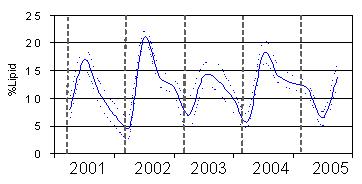 |
Body composition of planktivorous forage species
fluctuates significantly at high latitudes as a result of seasonal periods of food
availability and spawning expenditures. The
seasonal whole-body lipid content of Pacific herring (Clupea pallasi)
(mean ± 95% confidence interval) expressed on a wet-mass basis is depicted,
where vertical dashed lines indicate spawning periods.
|
| Analysis of Energy Content: Bomb Calorimetry vs. Calculation |
Energy content determined directly from bomb calorimetry and
indirectly calculated using calorific equivalents for protein and
energy yield similar results. In the Nutrition Ecology Laboratory, we regularly
estimate energy content via calculation because of the powerful information
incorporated in proximate composition data.
|
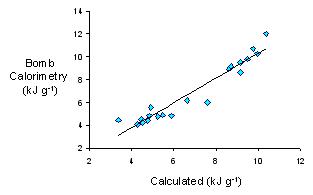 |
| Energy Allometry of Juvenile Capelin |
Analysis of the allometries between energy and length allow us to
examine energy allocation strategies of marine species. Here we show
log-log relationships between body length and energy content derived
from lipid and protein in juvenile capelin. Comparison of lipid energy
allocation lines for December and March shows a larger decrease in lipid
for age-1 capelin than for age-0 capelin. Conversely, comparison of the protein energy
line indicates that age-0 capelin lose more protein energy than age-1 capelin between
December and March. This loss in structure for age-0 capelin suggests that winter
mortality may be an important component to capelin recruitment.
|
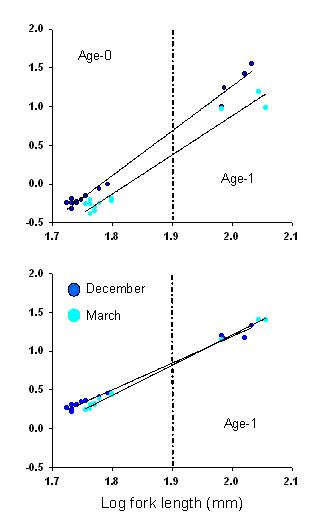 |
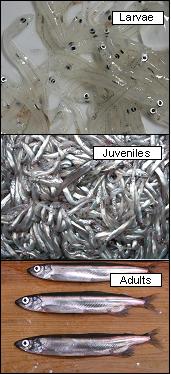
Life stages of capelin (Mallotus vilosus). |
Contact
Ron Heintz
Auke Bay Laboratories
Alaska Fisheries Science Center, NOAA Fisheries
Ted Stevens Marine Research Institute
17109 Pt Lena Loop Rd
Juneau AK 99801
(907) 789-6058
Ron.Heintz@noaa.gov
|